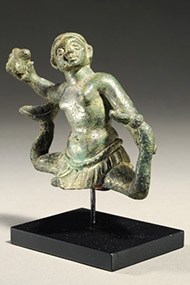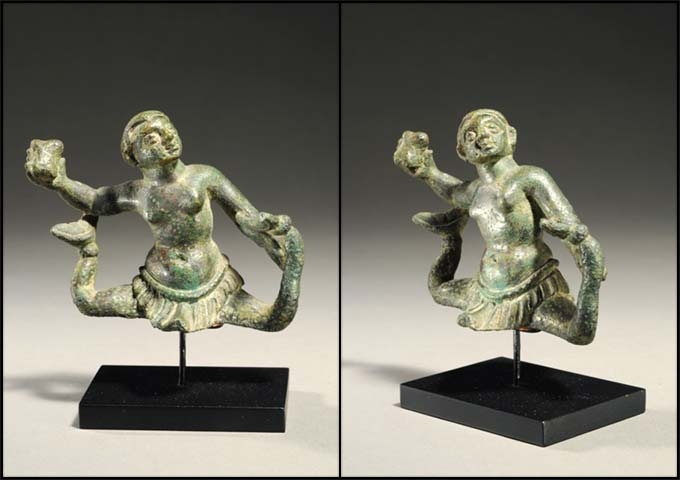Scylla about to Hurl a Rock

Scylla about to Hurl a Rock, Etruscan, c. 4th century B.C.E., cast bronze, H.: 2 1/8 inches. Gift (by exchange) of Wilson Farnsworth, George Mead, and Henry Sheldon, 2015.251.
This small Etruscan bronze depicts Scylla, the mythical marine monster that is part female and part fantastic animal. Scylla features ferociously in Homer’s Odyssey, when she snatches six of Odysseus’ men from his ship and devours them. Her name is invoked to this day in the expression “between Scylla and Charybdis,” meaning “between a rock and a hard place.”
Since Scylla is Greek in origin and appears here in an Etruscan context, this statuette manifests a link between the Greek and Etruscan civilizations. Moreover, it depicts a mythological figure associated with a specific geographical location between Greece and Etruria: the Straits of Messina, the narrows separating Sicily from the Italian mainland.
This solid-cast sculpture probably formed the finial of a cista, a tall Etruscan bronze box that held cosmetics and that was closed off by means of a domed lid.
Pieter Broucke
Professor of History of Art and Architecture
Associate Curator of Ancient Art

